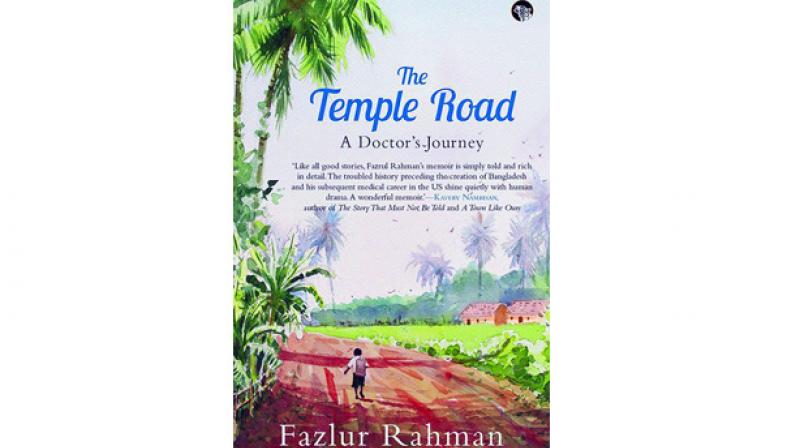A doctor's journey on path of knowledge

The temple road is a road that takes young Fazlur and his brothers and sisters to school. Rahman uses it to symbolise his journey on the path of knowledge from childhood to doctorhood. He was lucky enough to be sent out of East Pakistan as it then was, by his parents before the Pakistani political brutality kicked in and from his medical world in New York he looks back at his life in Bangladesh. Coming from a family of mullahs, Rahman had a remarkably liberal upbringing, celebrating Saraswati Puja in his school, sharing in Durga Puja celebrations while fasting for Id.
It was a kind of live and let live existence that would be hard to imagine in today’s days of extremism — though there was a steady trickle of refugees from India crossing the border surreptitiously at Beniapole. Rahman’s narrative falls easily into two paths — his life as a boy in a village with its medical crises and its tall tales — several of which he narrates like the one of Kelo the cowhered lost in his flute playing who vanished into a pond abandoning the princess he loved, or that of the pond famous for his crystal clear water. He also talks about the literary influences in his life, and the village’s pride in Michael Madhusudan Dutt who came from their part of the world.
Rahman’s is a story of tiny details that come together to make a readable whole. From the simplicities of village life with its Pather Panchali aspect, he moves on to his days as a medical student learning the art of correct diagnosis and struggling with his teachers. Struggles with teachers in fact, form a great part of the book, aptly because it is about a quest for knowledge and strict teachers abound whether in school or college. The narrative is honest and simply told — Rahman makes no bones about admitting to his mistakes — as when he went knocking at his professor’s door hoping to know his marks in the surgery practicals before they were released so that he could go to visit his grandmother with a clear conscience.
He was utterly terrified, aware than he was in the wrong but determined to go ahead. There are also glimpses of life and discrimination against Orientals in the America of the ’60s. For those interested in what it was like to live in a village in East Pakistan, the book is full of enjoyable moments. It would also be a handy point of reference for medical students confronted by their first dissections — usually frogs — and by phrases like ‘bamboo spine’.
Anjana Basu is the author of In the Shadow of the Leaves

